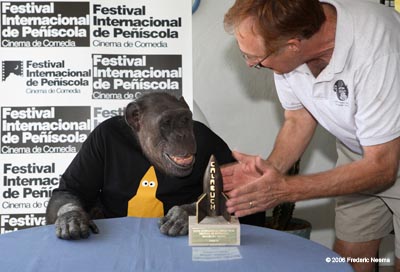NASA is appraising a human mission to a near-Earth asteroid—gauging the scientific merit of the endeavor while testing out spacecraft gear, as well as mastering techniques that could prove useful if a space rock ever took aim for our planet.
Space agency teams are looking into use of Constellation hardware for a human Near-Earth Object (NEO) mission—an effort underway at NASA’s Ames Research. Another study is delving into use of Constellation components to support an automated Mars sample return mission. That study is led by NASA’s Jet Propulsion Laboratory in Pasadena, California.
The Constellation Program encompasses NASA’s initial efforts to extend the human presence throughout the solar system.
Major pieces of the Constellation Program—such as the Orion crew vehicle—are meant to support transport of humans and cargo to the Moon and to the International Space Station, while future efforts would sustain missions to Mars and beyond.
Astronauts, engineers and scientists at NASA’s Johnson Space Center in Houston, Texas have been looking into the capabilities of the Orion vehicle for a mission to a near-Earth asteroid.
Significant assets
“A human mission to a near Earth asteroid would be scientifically worthwhile,” said Chris McKay, deputy scientist in the Constellation science office at the NASA Johnson Space Center. “It could be part of an overall program of understanding these objects. Also, it would be useful, instrumentally, in terms of understanding the threat they pose to the Earth.”
Stationed at NASA’s Ames Research Center located in California’s Silicon Valley, McKay told SPACE.com that work is underway to evaluate the science enabled by sending crews to asteroids, and to judge how best to assure safe and efficient exploration.
Asteroids are relics from early solar system formation, McKay pointed out. “Then there’s the whole, what I call the ‘Bruce Willis factor’…the star in the movie Armageddon…and the ability to send significant assets to an asteroid.”
“There’s a lot of public resonance with this notion that NASA ought to be doing something about killer asteroids…to be able to send serious equipment to an asteroid,” McKay observed. “The public wants us to have mastered the problem of dealing with asteroids. So being able to have astronauts go out there and sort of poke one with a stick would be scientifically valuable as well as demonstrate human capabilities,” he said.
McKay emphasized that it’s premature to send off a piloted mission to an asteroid to do countermeasure activities. “There could be testing of various approaches. But we don’t know enough about asteroids right now to know the best strategy for mitigation,” he said.
Forward looking reasons
“It’s a terrific mission if we can do it…and if it programmatically makes sense,” said Former Apollo astronaut, Russell Schweickart, Chairman of the B612 Foundation, a group with the goal of significantly altering the orbit of an asteroid, in a controlled manner, by 2015.
Schweickart said that there are a number of “forward looking reasons” to put asteroids on NASA’s lofty Moon, Mars and beyond agenda.
The value of asteroids for on-the-spot resources, for one, was noted by Schweickart. Secondly, validating command and control skills in piloting up to an asteroid would be beneficial, he said.
Furthermore, a human venture to a space rock may well accelerate precursor robotic surveys of asteroids, Schweickart observed. “Early unmanned visits to asteroids...it’s the same pattern as we did with the Moon and we’re doing right now with Mars. It’s all pretty logical,” he told SPACE.com.
Public awareness regarding asteroids, via a human exploration initiative, would be helpful, Schweickart said. It’s an opportunity for the public to be educated in reality, not in terms of Hollywood’s version of asteroid-busting as seen in the movie, Armageddon.
Quick dash
Clearly, it will be first-things-first in testing the new Constellation architecture. And that means going to low-Earth orbital missions to wring out the systems and procedures. These are likely to be followed in rather quick succession by lunar orbital and landing missions.
“But a very natural, early extension of the exploration capabilities of this new vehicle architecture would be a ‘quick dash’ near-Earth asteroid rendezvous mission,” said Dan Durda, a senior research scientist in the Department of Space Studies at the Southwest Research Institute, Boulder, Colorado.
“That kind of early demonstration mission might last no more than 60 or 90 days,” Durda said, “and take the crew no farther than a few lunar distances away from Earth.”
Durda said he could imagine that such a flight might be made before the first lunar landing even—perhaps after a lunar orbital mission or two—in order to try out spacecraft systems on an even longer-duration flight.
Primo science and samples
What would a space crew do once they’ve arrived at an asteroid?
There’s clearly engineering and program benefits, but also factoring in scientific investigations, the humans-to-an-asteroid idea becomes even more compelling, Durda suggested.
Still, as NASA’s NEAR-Shoemaker and Japan’s Hayabusa robotic efforts verified, good asteroid science can be done minus humans on the scene.
“But look at how having astronauts actually there on the Moon improved both the quantity and quality of the science return from Apollo,” Durda responded. “People have the judgment and creativity to select the best places to explore,” he said, and coupled with the dexterity offered by on-site, no-delay use of telerobotics in early missions, can gather primo science and samples.
Access to space resources
In general, a human mission to an asteroid offers an opportunity to take lunar-capable hardware and extend its reach to deep-space much sooner than would development of a full-up Mars-capable spacecraft, advised former astronaut, Tom Jones, a veteran of four shuttle flights.
Expeditionary treks to the asteroids enable NASA to grapple with many of the deep-space challenges in operations, communications, and life support without committing to a multi-year Mars mission profile, Jones told SPACE.com.
“And we should gain immediate scientific returns, potential access to space resources like water, and familiarity with complex operations around objects that present a potential hazard to Earth,” Jones added.
Can the infrastructure coming out of the Orion Crew Exploration Vehicle work be utilized for asteroid journeys?
The Crew Exploration Vehicle could be the nucleus of an asteroid mission, Jones said, furnishing some of the propulsion, communication, and habitation space needed, as well as the obvious reentry capability.
“By using the low Earth orbit-rendezvous approach planned for lunar missions, a spacecraft using other Constellation or International Space Station components might be able to perform a multi-month mission to a near-Earth object in a favorable orbit,” Jones said.
Deep-space thoughts
A human mission to an asteroid could be viewed somewhat as a gap-filler.
“After a lunar visit, we face a long interval in Earth-Moon space while we build up experience and technology for a Mars mission,” Jones suggested. An asteroid mission “could take us immediately into deep-space, sustaining program momentum, adding public excitement, and reducing the risk of a later Mars mission,” he said.
“Near-Earth object exploration is especially important if the Moon turns out to be bereft of extractable resources,” Jones pointed out. “Astronauts could collect a rich array of samples from the most scientifically interesting sites on the near-Earth object—dating back to the earliest days of the solar system—set up a pilot resource extraction experiment, demonstrate technology necessary for a future near-Earth object deflection mission, and look back at Earth from millions of miles away. The view would be breathtaking,” he said.
A human journey to an asteroid stretches our deep-space legs, Jones said, “and challenges ourselves operationally even after we return to the Moon.”
The key to sustaining a long and spirited exploration program “is to keep new results coming in and our imaginations looking out…way out beyond the Moon,” Jones concluded.



















